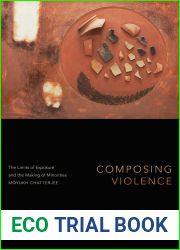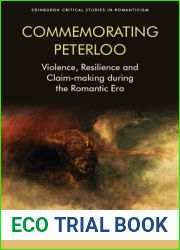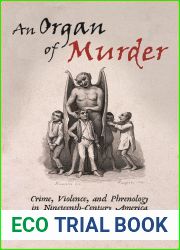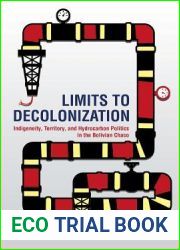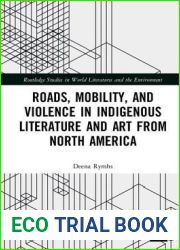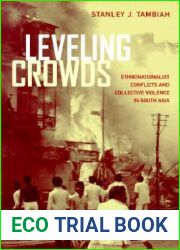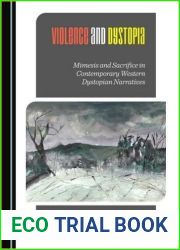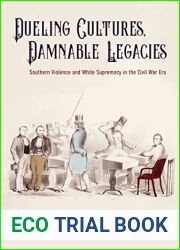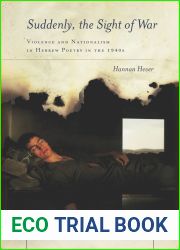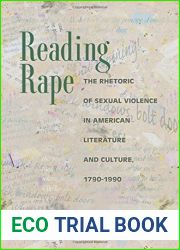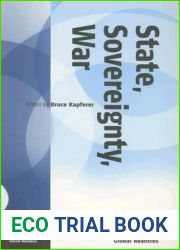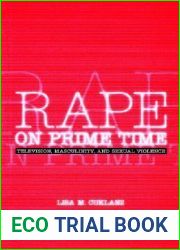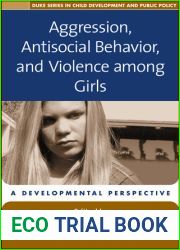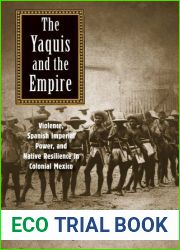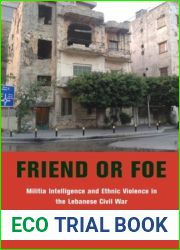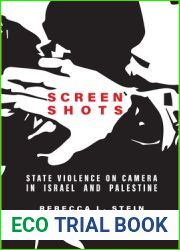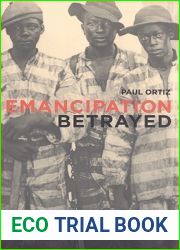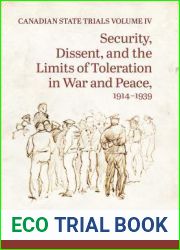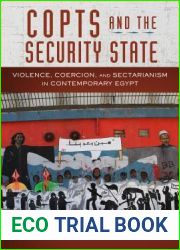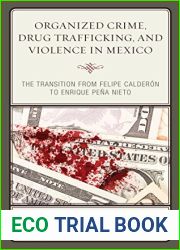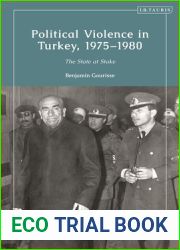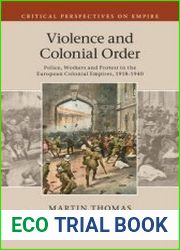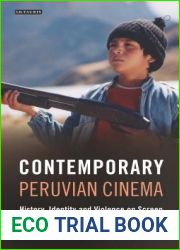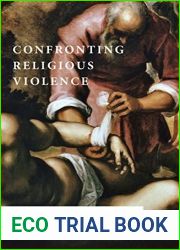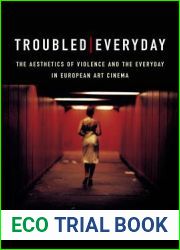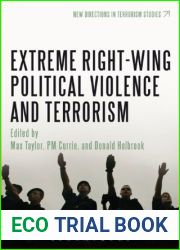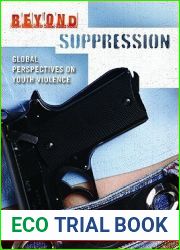
BOOKS - Composing Violence: The Limits of Exposure and the Making of Minorities (Theo...

Composing Violence: The Limits of Exposure and the Making of Minorities (Theory in Forms)
Author: Moyukh Chatterjee
Year: February 24, 2023
Format: PDF
File size: PDF 1.7 MB
Language: English

Year: February 24, 2023
Format: PDF
File size: PDF 1.7 MB
Language: English

Composing Violence: The Limits of Exposure and the Making of Minorities In his thought-provoking book, "Composing Violence: The Limits of Exposure and the Making of Minorities Moyukh Chatterjee delves into the highly visible political violence against minorities and its impact on law, public culture, and power. Through a detailed analysis of the 2002 Gujarat pogrom, where armed Hindu mobs attacked Muslims, leaving over one thousand dead, Chatterjee reveals how such acts of violence serve as catalysts for radical changes in society. Rather than being quashed through exposure by activists, media, and politicians, these acts of violence set the stage for India's transformation into a Hindu supremacist state. The author examines the state's and civil society's responses to the violence, highlighting the constitutive features of modern democracy, where riots and pogroms are employed as techniques to produce a form of society based on a killable minority and a triumphant majority. Chatterjee theorizes violence as a form of governance that creates minority populations, tracing the composition of anti-Muslim violence and the legal structures that transform it into the making of minorities and majorities.
Composing Violence: The Limits of Exposure and the Making of Minorities В своей вдохновляющей на размышления книге «Composing Violence: The Limits of Exposure and the Making of Minorities» Мойух Чаттерджи (Moyukh Chatterjee) рассказывает о хорошо заметном политическом насилии в отношении меньшинств и его влиянии на закон, общественную культуру и власть. Благодаря детальному анализу Гуджаратского погрома 2002 года, где вооружённые индуистские толпы напали на мусульман, в результате чего погибло более одной тысячи человек, Чаттерджи показывает, как подобные акты насилия служат катализаторами радикальных изменений в обществе. Вместо того, чтобы быть подавленными через разоблачение активистами, средствами массовой информации и политиками, эти акты насилия подготовили почву для превращения Индии в индуистское супремасистское государство. Автор рассматривает реакцию государства и гражданского общества на насилие, подчеркивая конституционные особенности современной демократии, где беспорядки и погромы используются в качестве методов для создания формы общества, основанной на убиваемом меньшинстве и триумфальном большинстве. Чаттерджи теоретизирует насилие как форму управления, которая создает меньшинства, отслеживая состав антимусульманского насилия и правовые структуры, которые превращают его в создание меньшинств и большинства.
Composing Violence : s Limites de l'Exposition et du Making of Minorities Dans son livre inspirant de réflexion, Composing Violence : The Limits of Exposure and the Making of Minorities, Moiuh Chutterji (Moyukh Chu) atterjee) parle de la violence politique bien visible contre les minorités et de son impact sur la loi, la culture sociale et le pouvoir. Grâce à une analyse détaillée du pogrom du Gujarat de 2002, où des foules hindoues armées ont attaqué des musulmans, tuant plus d'un millier de personnes, Chatterji montre comment de tels actes de violence servent de catalyseurs à des changements radicaux dans la société. Plutôt que d'être étouffés par les révélations des militants, des médias et des politiciens, ces actes de violence ont ouvert la voie à la transformation de l'Inde en un État suprémaciste hindou. L'auteur examine la réaction de l'État et de la société civile à la violence, en soulignant les caractéristiques constitutionnelles de la démocratie moderne, où les émeutes et les pogroms sont utilisés comme méthodes pour créer une forme de société basée sur une minorité tuée et une majorité triomphale. Chatterji théorise la violence comme une forme de gouvernement qui crée des minorités, en surveillant la composition de la violence anti-musulmane et les structures juridiques qui la transforment en une minorité et une majorité.
Violencia Compuesta: límites de la exposición y el Making of Minorities En su libro de reflexión «Violencia compuesta: límites de la exposición y el Making of Minorities», Moyuch Chiuch atterjee (Moyukh Chatterjee) habla de la violencia política bien visible contra las minorías y su impacto en la ley, la cultura pública y el poder. A través de un análisis detallado del Pogrom de Gujarat de 2002, donde multitudes hindúes armadas atacaron a los musulmanes, matando a más de mil personas, Chatterjee muestra cómo tales actos de violencia sirven como catalizadores para un cambio radical en la sociedad. En lugar de ser reprimidos a través de la exposición por activistas, medios de comunicación y políticos, estos actos de violencia han preparado el terreno para convertir a la India en un estado supremacista hindú. autor considera la respuesta del Estado y la sociedad civil a la violencia, destacando las características constitucionales de la democracia moderna, donde los disturbios y pogromos se utilizan como métodos para crear una forma de sociedad basada en una minoría asesinada y una mayoría triunfante. Chatterjee teoriza la violencia como una forma de gobierno que crea minorías, monitoreando la composición de la violencia antimusulmana y las estructuras legales que la convierten en la creación de minorías y mayorías.
Composing Violence: The Limits of Exposure and the Making of Minorities em seu livro inspirador para a reflexão, Moiuch Chatterjee (Moyukh Chuch) atterjee) fala sobre a violência política bem visível contra as minorias e sua influência sobre a lei, a cultura pública e o poder. Através de uma análise detalhada do Pogrom de Gujarat, em 2002, onde multidões hindus armadas atacaram muçulmanos, matando mais de um milhar de pessoas, Chatterjee mostra como este tipo de violência serve de catalisador para uma mudança radical na sociedade. Em vez de serem reprimidos através da revelação por ativistas, meios de comunicação e políticos, esses atos de violência prepararam o terreno para tornar a Índia um estado supremacista hindu. O autor considera a reação do Estado e da sociedade civil à violência, enfatizando as características constitucionais da democracia moderna, onde os distúrbios e os tumultos são usados como métodos para criar uma forma de sociedade baseada em uma minoria decadente e uma maioria triunfante. Chatterjee teoriza a violência como uma forma de governança que cria minorias, monitorando a composição da violência anti-muçulmana e as estruturas legais que a transformam em uma formação minoritária e majoritária.
Composing Violence: The Limits of Exposure and the Making of Minorities Nel suo libro di ispirazione alla riflessione, «Composing Violence: The Limits of Exposure and the Making of Minorities», di Moiuh Chatterji atterjee) parla di violenza politica ben visibile contro le minoranze e della sua influenza sulla legge, sulla cultura pubblica e sul potere. Grazie a un'analisi dettagliata del Gudjarat Pogrom del 2002, dove una folla induista armata attaccò i musulmani, causando la morte di oltre mille persone, Chatterji dimostra come tali violenze siano il catalizzatore di un cambiamento radicale nella società. Invece di essere depressi da attivisti, media e politici, questi atti di violenza hanno preparato il terreno per trasformare l'India in uno Stato supremassista induista. L'autore considera la reazione dello Stato e della società civile alla violenza, sottolineando le caratteristiche costituzionali della democrazia moderna, dove i disordini e i roghi vengono usati come metodi per creare una forma di società basata su una minoranza decadente e una maggioranza trionfale. Chatterji teorizza la violenza come una forma di governo che crea minoranze, monitorando la composizione della violenza antimusulmana e le strutture legali che la trasformano in una creazione di minoranze e maggioranza.
Composing Violence: The Limits of Exposure and the Making of Minorities In seinem inspirierenden Buch „Composing Violence: The Limits of Exposure and the Making of Minorities“ erzählt Moyukh Chatterjee über die deutlich sichtbare politische Gewalt gegen Minderheiten und ihre Auswirkungen auf Recht, öffentliche Kultur und Macht. Durch eine detaillierte Analyse des Gujarat-Pogroms von 2002, bei dem bewaffnete hinduistische Mobs Muslime angriffen und mehr als eintausend Menschen töteten, zeigt Chatterjee, wie solche Gewalttaten als Katalysatoren für radikale Veränderungen in der Gesellschaft dienen. Anstatt durch Enthüllungen von Aktivisten, Medien und Politikern unterdrückt zu werden, bereiteten diese Gewalttaten den Boden für die Umwandlung Indiens in einen hinduistischen Supremazistenstaat. Der Autor untersucht die Reaktion des Staates und der Zivilgesellschaft auf Gewalt und betont die konstitutionellen Merkmale der modernen Demokratie, in der Unruhen und Pogrome als Methoden zur Schaffung einer Gesellschaftsform verwendet werden, die auf einer ermordeten Minderheit und einer triumphalen Mehrheit basiert. Chatterjee theoretisiert Gewalt als eine Form der Regierung, die Minderheiten schafft, indem sie die Zusammensetzung antimuslimischer Gewalt und die rechtlichen Strukturen verfolgt, die sie in die Schaffung von Minderheiten und Mehrheiten verwandeln.
Skomponowanie przemocy: Granice ekspozycji i podejmowania mniejszości W książce Komponowanie przemocy: Granice ekspozycji i podejmowania mniejszości, Moyukh Chatterjee opowiada o bardzo widocznej przemocy politycznej wobec mniejszości i jej wpływu na prawo, kulturę publiczną i władzę Poprzez szczegółową analizę pogromu w Gudżaracie z 2002 roku, gdzie uzbrojeni hinduscy mobowie zaatakowali muzułmanów, zabijając ponad tysiąc osób, Chatterjee pokazuje, jak takie akty przemocy służą jako katalizatory radykalnych zmian w społeczeństwie. Zamiast być stłumionym przez aktywistów, media i polityków, te akty przemocy ustawiły Indie na scenie, aby stały się państwem hinduistycznym. Autor uważa reakcję państwa i społeczeństwa obywatelskiego na przemoc, podkreślając konstytucyjne cechy współczesnej demokracji, gdzie zamieszki i pogromy są wykorzystywane jako metody tworzenia formy społeczeństwa opartej na zamordowanej mniejszości i zwycięskiej większości. Chatterjee teoretyzuje przemoc jako formę sprawowania rządów, która tworzy mniejszości poprzez śledzenie składu przemocy antymuzułmańskiej i struktur prawnych, które przekształcają ją w tworzenie mniejszości i wyższości.
Composing Violence: The Limits of Exposure and the Making of Meantues and the Making of Miantues and the Making of Ministerjee בספרו מעורר המחשבה: The Limits of Exposure and the MInMMMigerics, מספר. באמצעות ניתוח מפורט של פוגרום גוג 'ראט משנת 2002, שבו אספסוף הינדי חמוש תקף מוסלמים והרג יותר מאלף אנשים, מראה צ'אטרג 'י כיצד מעשי אלימות כאלה משמשים כזרזים לשינויים קיצוניים בחברה. במקום להיות מדוכא על ידי חשיפה על ידי פעילים, התקשורת ופוליטיקאים, מעשי אלימות אלה הציבו את הבמה להודו להפוך למדינה הינדית עליונה. המחבר מחשיב את תגובת המדינה והחברה האזרחית לאלימות, ומדגיש את המאפיינים החוקתיים של הדמוקרטיה המודרנית, בהם מהומות ופוגרומים משמשים כשיטות ליצירת חברה המבוססת על מיעוט נרצח ורוב מנצח. צ 'אטרג'י מתאר את האלימות כסוג של ממשל היוצר מיעוטים על ידי מעקב אחר הרכב האלימות האנטי-מוסלמית והמבנים החוקיים ההופכים אותה ליצירת מיעוטים ומיעוטים.''
Şiddeti Beslemek: Maruz Kalmanın Sınırları ve Azınlıkların Oluşumu Moyukh Chatterjee, düşündürücü kitabı Composing Violence: The Limits of Exposure and the Making of Minorities (Şiddeti Oluşturmak: Maruz Kalmanın Sınırları ve Azınlıkların Oluşumu)'nda, azınlıklara yönelik son derece görünür siyasi şiddeti ve bunun hukuk, kamu kültürü ve iktidar üzerindeki etkisini anlatıyor. lahlı Hindu çetelerinin Müslümanlara saldırdığı ve binden fazla insanı öldürdüğü 2002 Gujarat pogromunun ayrıntılı bir analiziyle Chatterjee, bu tür şiddet eylemlerinin toplumdaki radikal değişiklikler için katalizör görevi gördüğünü gösteriyor. Aktivistler, medya ve politikacılar tarafından bastırılmak yerine, bu şiddet eylemleri Hindistan'ın Hindu üstünlükçü bir devlet haline gelmesine zemin hazırladı. Yazar, devletin ve sivil toplumun şiddete tepkisini göz önünde bulundurarak, isyanların ve pogromların öldürülen bir azınlığa ve muzaffer bir çoğunluğa dayanan bir toplum biçimi yaratma yöntemleri olarak kullanıldığı modern demokrasinin anayasal özelliklerini vurgulamaktadır. Chatterjee, şiddeti, Müslüman karşıtı şiddetin bileşimini ve onu azınlıkların ve çoğunlukların yaratılmasına dönüştüren yasal yapıları izleyerek azınlıkları yaratan bir yönetim biçimi olarak teorileştirir.
تأليف العنف: حدود التعرض وتشكيل الأقليات في كتابه المثير للتفكير المؤلف للعنف: حدود التعرض وتكوين الأقليات، يروي مويوخ تشاترجي العنف السياسي الواضح للغاية ضد الأقليات وتأثيره على القانون والثقافة العامة والسلطة. من خلال تحليل مفصل لمذبحة غوجارات عام 2002، حيث هاجمت حشود هندوسية مسلحة المسلمين، مما أسفر عن مقتل أكثر من ألف شخص، يوضح تشاترجي كيف أن أعمال العنف هذه تعمل كمحفز للتغييرات الجذرية في المجتمع. بدلاً من قمعها من خلال الكشف من قبل النشطاء ووسائل الإعلام والسياسيين، مهدت أعمال العنف هذه الطريق للهند لتصبح دولة هندوسية متعصبة. وينظر صاحب البلاغ في رد فعل الدولة والمجتمع المدني على العنف، مشدداً على السمات الدستورية للديمقراطية الحديثة، حيث تُستخدم أعمال الشغب والمذابح كأساليب لخلق شكل من أشكال المجتمع يقوم على أقلية مقتولة وأغلبية منتصرة. يضع تشاترجي نظرية للعنف كشكل من أشكال الحكم الذي يخلق الأقليات من خلال تتبع تكوين العنف ضد المسلمين والهياكل القانونية التي تحوله إلى خلق الأقليات والأغلبية.
폭력 작성: 노출의 한계와 소수 민족 만들기 폭력: 노출의 한계와 소수 민족 만들기에서 Moyukh Chatterjee는 소수 민족에 대한 눈에 띄는 정치적 폭력과 법에 미치는 영향에 대해 이야기합니다. 공공 문화와 힘. Chatterjee는 무장 한 힌두 폭도들이 무슬림들을 공격하여 천 명 이상을 죽인 2002 구자라트 포그 롬에 대한 자세한 분석을 통해 그러한 폭력 행위가 사회의 급진적 변화를위한 촉매제 역할을하는 방법을 보여줍니다. 활동가, 언론 및 정치인의 노출을 통해 억압되는 대신, 이러한 폭력 행위는 인도가 힌두교 우월 주의자가되는 무대가되었습니다. 저자는 국가와 시민 사회가 폭력에 대한 반응을 고려하여 현대 민주주의의 헌법 적 특징을 강조하며, 폭동과 포그 롬은 살해 된 소수 민족과 승리 한 다수를 기반으로 사회의 형태를 만드는 방법으로 사용됩니다. Chatterjee는 반 무슬림 폭력의 구성과이를 소수 민족과 대다수의 창조로 바꾸는 법적 구조를 추적함으로써 소수 민족을 만드는 거버넌스의 한 형태로 폭력을 이론화합니다.
Composing Violence: The Limited of Exposure and the Making of Minolities(暴露の限界とマイノリティの構成)モユフ・チャッタージーは、マイノリティに対する政治的暴力と、法律、公共文化、権力への影響について語った。武装したヒンドゥー教徒がイスラム教徒を攻撃し、1000人以上の人々を殺害した2002グジャラート・ポグロムの詳細な分析を通じて、チャッタージーは、そのような暴力行為が社会の急進的な変化の触媒としてどのように機能するかを示しています。これらの暴力行為は、活動家、メディア、政治家の暴露を通じて抑圧されるのではなく、インドがヒンドゥー至上主義国家になるための舞台となった。著者は、暴動とポグロムが殺害された少数派と勝利した多数派に基づいて社会の形態を作成するための方法として使用される現代民主主義の憲法上の特徴を強調し、暴力に対する国家と市民社会の反応を考慮します。Chatterjeeは、反イスラム暴力の構成とそれを少数派と少数派の創造に変える法的構造を追跡することによって少数派を作成するガバナンスの一形態として暴力を理論化します。
作曲暴力:曝光極限和制作部落在他的啟發性書《作曲暴力:曝光極限和制作部落極限》Moyuch Chatterjee(Moukh)Chatterjee)講述了針對少數民族的政治暴力及其對法律,公共文化和權力的影響。通過對2002古吉拉特邦大屠殺的詳細分析,印度教武裝暴徒襲擊了穆斯林,造成一千多人死亡,查特吉展示了這種暴力行為如何催化了社會的根本變化。這些暴力行為不是通過活動家、媒體和政客的曝光來壓制,而是為印度成為印度教至上主義國家奠定了基礎。作者回顧了國家和民間社會對暴力的反應,強調了現代民主的憲法特征,在現代民主中,騷亂和大屠殺被用作一種基於被屠殺的少數民族和勝利的多數的社會形式。查特吉(Chatterjee)將暴力理論化為一種政府形式,通過追蹤反穆斯林暴力的構成以及將其轉變為少數派和多數派的法律結構來創造少數群體。







